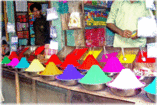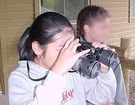User:PoorNUnknown/Ye Olde Webbe Desyne Shoppe
“I visited them and we just 'clicked'!”
– Oscar Wilde on Ye Olde Webbe Desyne Shoppe
“In Soviet Russia, hyperlink clicks YOU!!”
– Russian Reversal on Ye Olde Webbe Desyne Shoppe
Ye Olde Webbe Desyne Shoppe is a permanent exhibition of how websites were produced before the advent of computers and the internet. We do our best to keep these traditions alive as the skills involved are in danger of disappearing. People now have text editors and WYSIWYG solutions like MacroMedia ScreamWeaver, Microsoft Fuckpage, Adobe Trash, and online stuff like this site. Understanding how web pages were crafted in the old days can help keep our history and culture alive in these times where sites like YouTube.com and MySpace let you do all sorts of clever shit with a mouse, a profound sense of narcissism, no taste, and only half a brain.
The main areas of our research are as follows:
Text production and editing[edit | edit source]
If you wonder why the quality of the written word in older websites is a lot better than these days, then it's pretty easy to see why. You couldn't just bash out any old drivel and then edit it later: it required thought and planning as it was all hardcopy, produced on so-called 'typewriters' like the one you can see on the right.
This presented a whole range of technical issues, as these 'typewriters' didn't have the extra characters like angle brackets (like these: < and >) which are necessary to make hyperlinks, an abundance of which is the hallmark of any good web page or site. We'll cover how we make them further down, but take a tip from the old craftsmen: the more hyperlinks, the better your page. These were hard to produce back then so we used them sparingly, but these days, why not?
But back to the quality issues. Editing an existing website back then entailed removing the document physically from its location on the net or web (see below), and replacing it with another where the text was changed. You can, bet we they got there spelling and punctation right! They didn't spout any old tosh or drivel either! Dancing hamsters and vids of your kitten in the sink were non-existent...I mean, this was so long ago that All Your Base still belonged to Them.
So take a tip from the old masters: get you're text write before publishing.
Net Production[edit | edit source]
Teh Internet as we know it did not exist then. We had to make our own net or 'web' which was a lot smaller, and demanded skilled workmanship and dedication in order to make it work properly.
The principles were very similar, though: it was a decentralised network which was interconnected and if any node went down, there was minimal loss of fish data - it just found a different route. The guy on the right is in the process of making part of the collosal net we used in those days. Things are more advanced now but as you can see, there's sense of real quality in the web of old.
Links[edit | edit source]
This was hard, boring work. We employed thousands of people to make links by hand. Like today, links broke easily and needed to be maintained. You can see some ready-made links on the right. Unlike modern throwaway culture, we recycled 99% of our angle brackets. It's easy to make new ones today, so most people just throw them away.
Once again, we could take a tip from the past - discarded angle brackets are a big environmental problem in some parts of cyberspace. Apart from the fact that they're sharp and hurt innocent little babies and small furry animals, their high anglium content can affect sensitive people and make them lose all sense of direction.
Special Characters[edit | edit source]
As mentioned briefly above, a 'typewriter' lacked a number of the special characters you often need in web pages. The Angle Bracket < and > was easy to manufacture in both larger-than and smaller-than sizes, and by reversing the polarity of the anglium in the Frontslash (/) we could also produce the Backslash (\). It was a bit more difficult to produce other characters like pound signs (like this #) but as the internet wasn't commercial in those days, difficult ones like £ and $ were very rare and didn't give many problems.
Making special characters took skill and was boring, repetitive work, which, unlike today, was often outsourced.
Colors[edit | edit source]
(or Colours, which the real spelling - some lazy person left out the U and it caught on, as things do on Teh Internet)
You wouldn't believe how hard it was to get nice colours back then. The genetic mutation that gave people 16 fingers was very rare, and as a result, Hexatridecimal numbering (which is what colour codes are made of) hadn't been invented. Instead, specialists produced colours which were sold in powder form, much like other sought-after substances today.
These were then mixed and added to the text. Because these colours were very expensive, people mostly stuck to black text in a white(ish) background: however, the invention of Hexatridecimal colour codes has made adding colours very easy. You can add a feeling of luxury and sophistication to your pages by giving them a snazzy black background and pretty rainbow colours to your text. It's like bling for web pages - the more colours, the more you will impress your friends.
Search Engines[edit | edit source]
Search engines have improved considerably. In the old days, they were slow, heavy, and you needed good eyesight to find what you were looking for. We have a hands-on workshop where people can try out the old manual/visual technologies: it's tough and physically exhausting. Try it - afterwards, we know you'll love Google even more.
Spam[edit | edit source]
Due to health and safety considerations, we have had to close our hands-on "Spam as it used to be" sessions. The cans are simply too hard and too heavy and we had a large number of head injuries due to people being 'spammed' from behind without protective equipment. Don't even ask about eating it. Pictures of Spam are simply too disgusting to show here.
Blogs (or Bogs)[edit | edit source]
Blogs were much rarer, due to the technical hurdles involved. Making them wasn't easy and wasn't usually worth the effort as the information in them was usually of poor quality, and had a very short shelf life, unlike today. 'Boggers' as they were known then (due to the kind of cheap paper they used - known in the UK as Bog Paper) thought they were a hardcore elite when in fact they were irritating narcissistic self-publicists with no lives.
Luckily this has changed completely. With the advent of modern technology, the vast majority of blogs now contain excellent, trustworthy information of great value to the general public.
Conclusion[edit | edit source]
As you can see from the above, here at Ye Olde Webbe Desyne Shoppe, we work hard to keep these traditions alive. You can help us in our work by sending donations via PayPal or in old-fashioned money.
You can contact us via snail-mail, but we prefer stone tablets: paper seems so flimsy by comparison, and at least we'll know you took the trouble.







